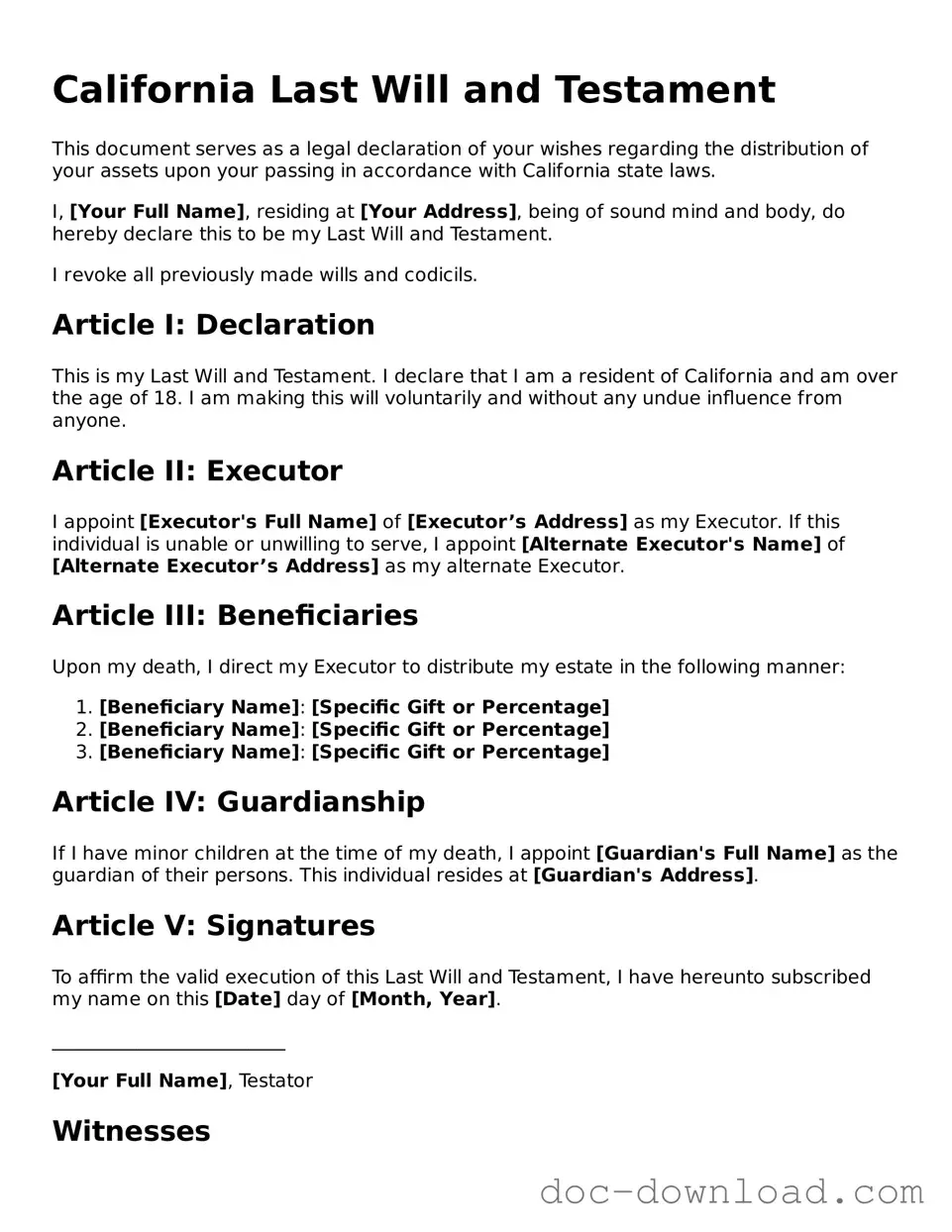California Last Will and Testament
This document serves as a legal declaration of your wishes regarding the distribution of your assets upon your passing in accordance with California state laws.
I, [Your Full Name], residing at [Your Address], being of sound mind and body, do hereby declare this to be my Last Will and Testament.
I revoke all previously made wills and codicils.
Article I: Declaration
This is my Last Will and Testament. I declare that I am a resident of California and am over the age of 18. I am making this will voluntarily and without any undue influence from anyone.
Article II: Executor
I appoint [Executor's Full Name] of [Executor’s Address] as my Executor. If this individual is unable or unwilling to serve, I appoint [Alternate Executor's Name] of [Alternate Executor’s Address] as my alternate Executor.
Article III: Beneficiaries
Upon my death, I direct my Executor to distribute my estate in the following manner:
- [Beneficiary Name]: [Specific Gift or Percentage]
- [Beneficiary Name]: [Specific Gift or Percentage]
- [Beneficiary Name]: [Specific Gift or Percentage]
Article IV: Guardianship
If I have minor children at the time of my death, I appoint [Guardian's Full Name] as the guardian of their persons. This individual resides at [Guardian's Address].
Article V: Signatures
To affirm the valid execution of this Last Will and Testament, I have hereunto subscribed my name on this [Date] day of [Month, Year].
_________________________
[Your Full Name], Testator
Witnesses
We, the undersigned witnesses, declare that the above-mentioned individual, [Your Full Name], signed this Will in our presence, and we hereby affirm it:
- _________________________ (Signature) [Witness 1 Name], residing at [Witness 1 Address]
- _________________________ (Signature) [Witness 2 Name], residing at [Witness 2 Address]
